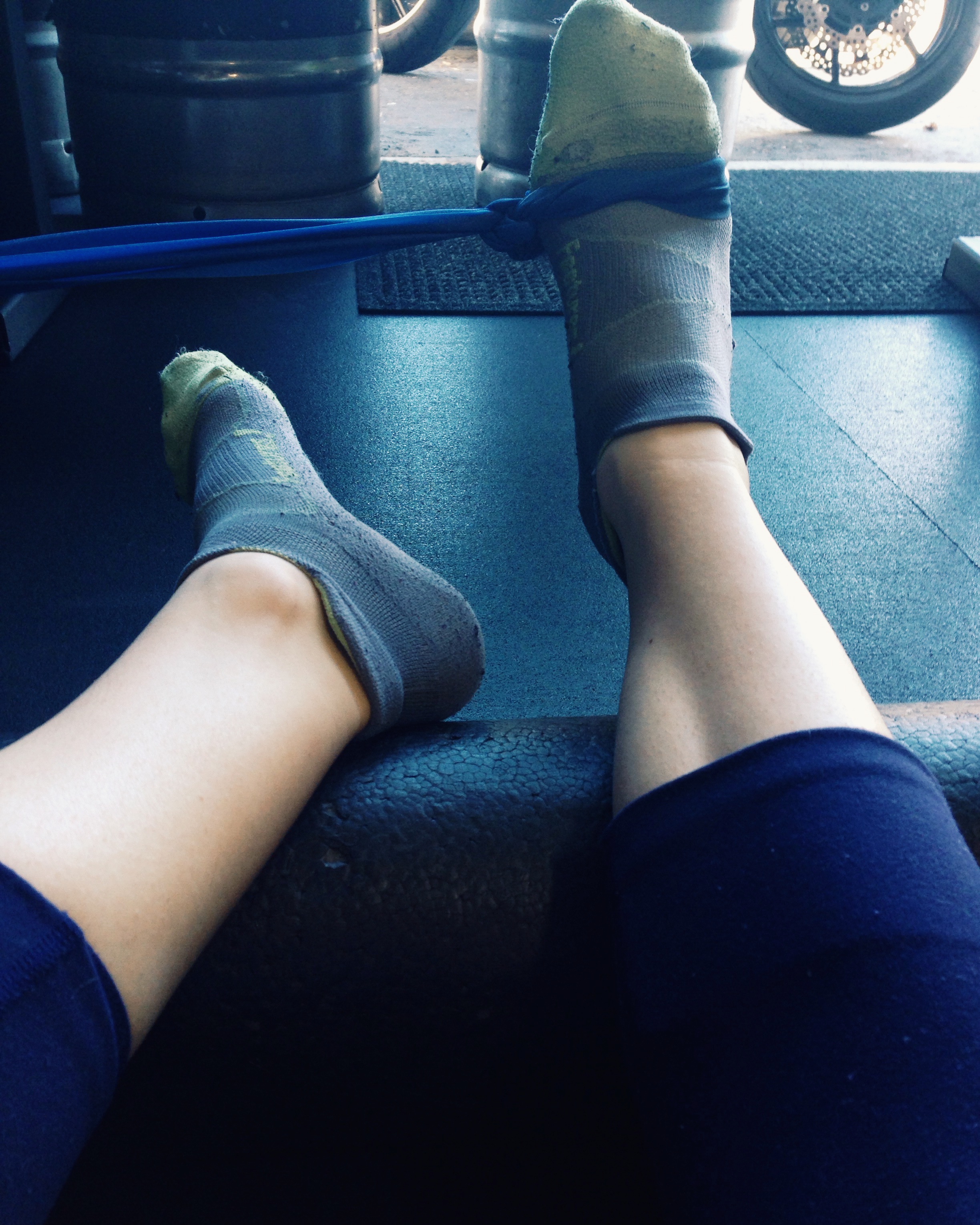Exercises for Posterior Tibial Tendonitis
Posterior tibial tendonitis is frustrating. You feel it in every step you take, and it drives you insane when you are sitting on the couch instead of out for a run. I’ve been there, and I never want to be there again.
I am a firm believer that injuries are your body’s way to alert you to an imbalance or weakness, and mine has spoken loud and clear.
I have spent the past year scouring the Internet and talking to every specialist I’ve met (the amazing people at the RunSafe clinic, doctors, physical therapists, massage and bodywork therapists, other PTT athletes) to find the best exercises to treat my PTT and prevent it from ever (EVER!) coming back.
There are three main areas you need to strengthen if you are suffering from PTT (or any other ankle/foot injury) the feet, ankles/lower leg, and the hip. Instead of trying to explain how to do all of these exercises myself, I linked each one to more information and instructions.
Here are some exercises I’ve been doing, from the bottom up:
Feet

Whether you start with flat feet or PTT causes your arch to fall, chances are you are in need of some serious arch support. Realign your arch and reduce the stress on your plantar fascia with these exercises.
Toe squeeze and spread (rubber bands are great for a little resistance)
Standing on one foot/balance work
Without shoes, stand on one leg for 30 seconds or so and focus on maintaining an arch while keeping your balance. Once the 30 seconds gets easy, add time/sets, try it with your eyes closed, or really challenge yourself by standing on a Bosu or another uneven surface. Be careful with this one! Balance work can really irritate my tendons. Be sure to work up to it very slowly. I mean it when I say to start for just 30 seconds on each side.
Ankles/lower leg

For all exercises that you do with a band, you can buy a TheraBand (or any other therapy band) online.
Calf raises
Watch out! This is another one where you really need to ease into it. These irritated my PTT when I first started doing them. I had to start doing these sitting in a chair, just lifting the weight of part of my legs. Once I was able to do that, my physical therapist had me set a bit of weight on my knees (a heavy book works great if you don’t have access to hand weights). I did three sets of 10 reps (both legs at the same time) with the weight on my knees for about a week. Once I could do that easily, I moved on to leaning fairly heavily on a counter and lifting part of my body weight for three sets of 10. I’m currently doing three sets of 10 with my full body weight, but both legs at the same time. I’m going to progress to doing them mostly on one foot until I can do them one leg at a time with all of my body weight. If you are super advanced and you have gone through the whole progression, you can add weight, but do it slowly!
Ankle dorsiflexion with a band
Hips
Your hips are critical for keeping your gait balanced and even. Recent studies have shown that the hips are linked to everything from knee pain to ankle pain. These very well might be the most important exercises on the list. Don’t skip these! (Curious about where your hips are the weakest? Try this test.)
Glute bridge
Weighted, unweighted, one leg, two legs – any and all variations are great!
Single-leg deadlift
Way less scary than they sound.








 What to do with old running shoes:
What to do with old running shoes:










